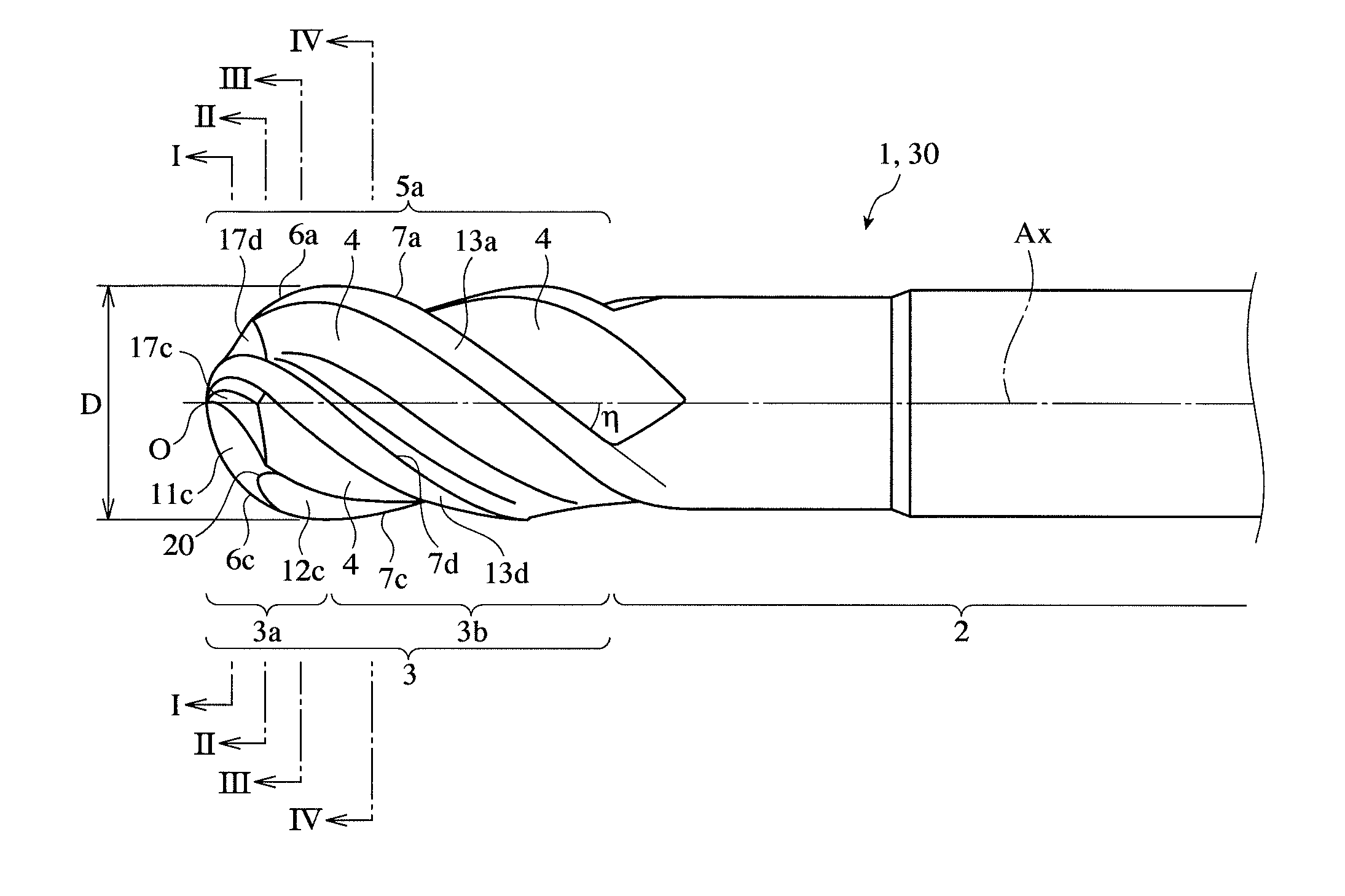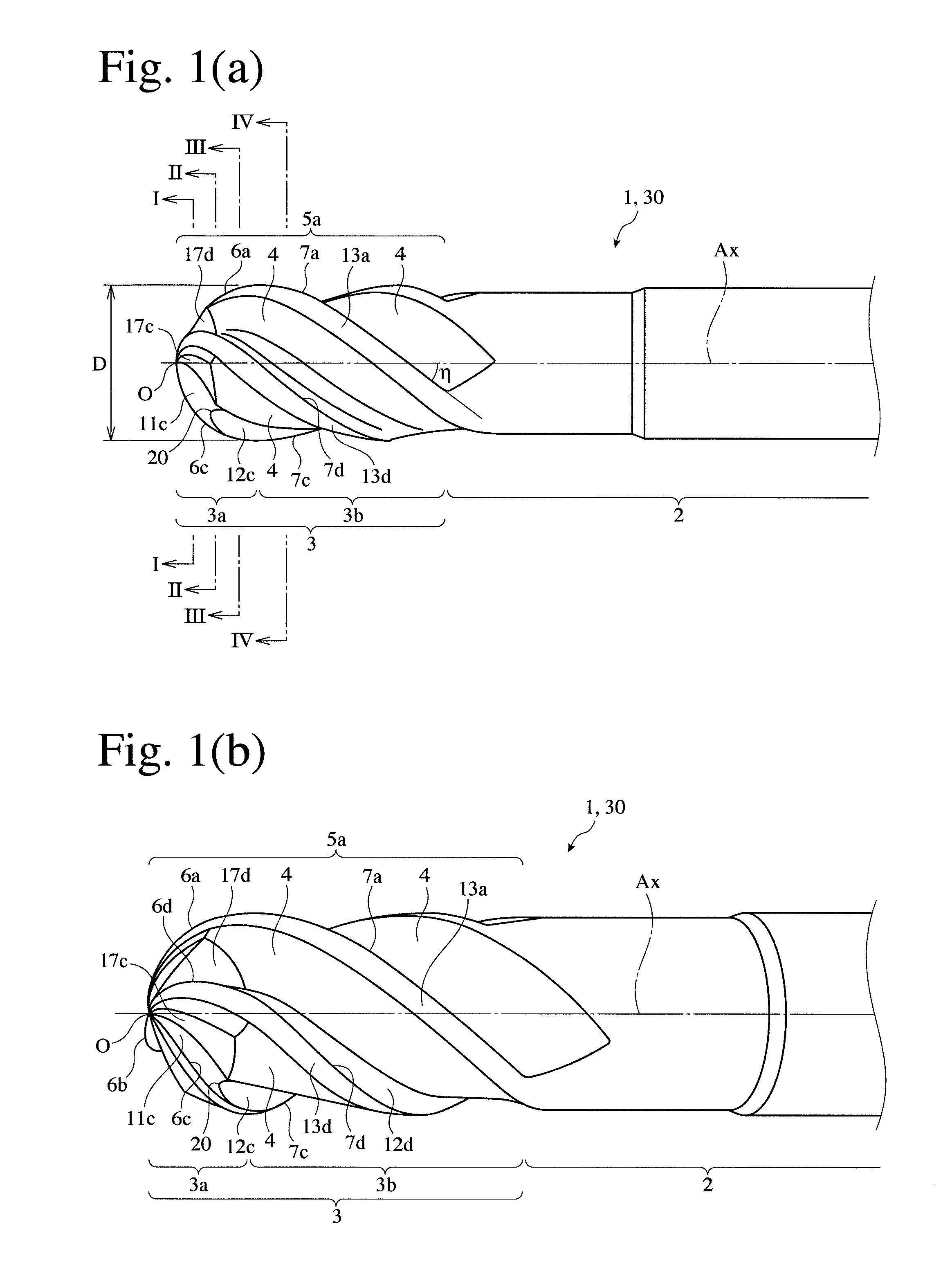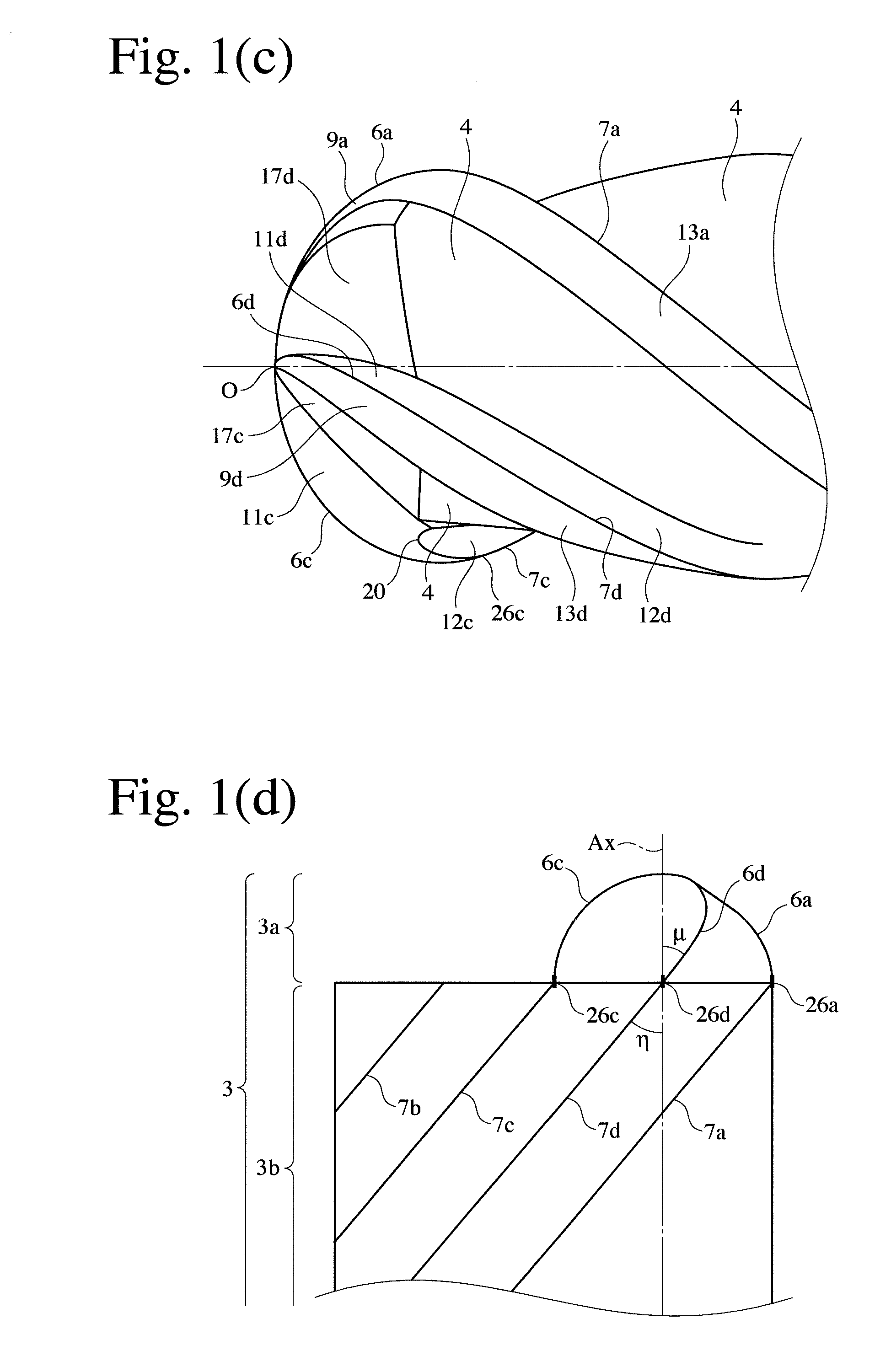Multi-flute ball end mill
a ball end mill and multi-flute technology, applied in the direction of metal-working equipment, milling equipment, metal-working apparatus, etc., can solve the problems of affecting the speed affecting the efficiency of the ball end mill, and generating vibration, so as to reduce the speed and breakage. , the effect of suppressing vibration
- Summary
- Abstract
- Description
- Claims
- Application Information
AI Technical Summary
Benefits of technology
Problems solved by technology
Method used
Image
Examples
first embodiment
(1) First Embodiment
[0067]The four-flute ball end mill 1 according to the first embodiment of the present invention, which is shown in FIGS. 1-7, comprises a cylindrical shank portion 2, and a cutting edge portion 3, which has a tip-end ball portion 3a, and a peripheral cutting edge portion 3b between the ball portion 3a and the shank portion 2. The cutting edge portion 3 is provided with four cutting edges 5a, 5b, 5c, 5d each having a predetermined twist angle. Each cutting edge 5a-5d is constituted by a circular ball-end cutting edge 6a, 6b, 6c, 6d formed in the ball portion 3a, and a spiral peripheral cutting edge 7a, 7b, 7c, 7d formed in the peripheral cutting edge portion 3b, and each ball-end cutting edge 6a-6d is smoothly (with no inflection point) connected to each peripheral cutting edge 7a-7d. As shown in FIG. 2, four ball-end cutting edges 6a-6d are arranged via gashes 17a-17d around a rotation center point O in the ball portion 3a.
[0068]As shown in FIGS. 1(a)-1(c), each...
second embodiment
(2) Second Embodiment
[0088]As shown in FIGS. 8(a) and 8(b), the four-flute ball end mill 30 according to the second embodiment of the present invention is substantially the same as the four-flute ball end mill 1 in the first embodiment, except for the shape of each center-lowered, inclined cutting edge and the uneven arrangement of ball-end cutting edges. In FIG. 8, the same reference numerals are assigned to the same portions as in the first embodiment. These differences will be explained in detail below.
[0089]FIG. 9 enlargedly shows part of FIG. 8(b). An arcuate portion 8c1 obtained by the formation of a flank 10d extends between a rotation center point O and a point K3, and a curved extension 8c2 extending radially inward from a ball-end cutting edge 6c is connected to the arcuate portion 8c1 at the point K3. The point K3 is an inflection point between the arcuate portion 8c1 and the curve portion 8c2.
[0090]In the example shown in FIG. 9, too, the circumferential width W1 of a fl...
PUM
 Login to View More
Login to View More Abstract
Description
Claims
Application Information
 Login to View More
Login to View More - R&D
- Intellectual Property
- Life Sciences
- Materials
- Tech Scout
- Unparalleled Data Quality
- Higher Quality Content
- 60% Fewer Hallucinations
Browse by: Latest US Patents, China's latest patents, Technical Efficacy Thesaurus, Application Domain, Technology Topic, Popular Technical Reports.
© 2025 PatSnap. All rights reserved.Legal|Privacy policy|Modern Slavery Act Transparency Statement|Sitemap|About US| Contact US: help@patsnap.com



